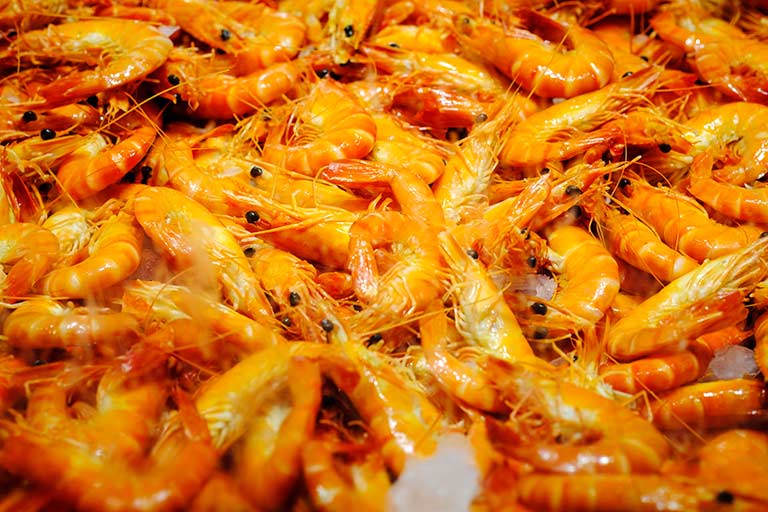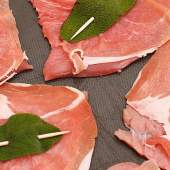Australia

“Buying bread from a man in Brussels
He was six-foot-four and full of muscles
I said, “do you speak-a my language?”
He just smiled and gave me a vegemite sandwich
And he said
I come from a land down under…”
— “Down Under,” Men at Work, 1981
G’day, mates! This week, we go to the land Down Under, Australia — a country that is also a continent; a place where sheep outnumber humans three to one; and a region that is home to the dingo, the didgeridoo, and Crocodile Dundee (“throw another shrimp on the barbie!”).
But enough of the clichés (which native Aussies surely find as tiresome as anyone would in their home country). Let’s take a look at the cuisine of this friendly Southern Hemisphere locale whose culinary traditions have been influenced as much by its Aboriginal roots (whose diet is familiarly known as “bushtucker”) as by the many immigrants who have settled there from across the globe.
While Australia has some favorite foods in common with its close pal Great Britain (sausage rolls, meat pies, and that Vegemite sandwich referenced above), and barbecue truly is a very big deal, there are a number of popular mainstays that are uniquely their own. Here are just a few of them:
- Chiko rolls — This savory snack, designed to be eaten on the go from a branded paper sleeve, is Australia’s version of a spring roll. It was dreamed up by Frank McEncroe in 1951 and marketed as a “chicken roll” despite containing no chicken whatsoever. Its crunchy, deep-fried flour-and-egg pastry tube is filled with barley, chopped cabbage, beef, green beans, onion, celery, carrot and wheat cereal — all of it finely ground. You can’t walk down the street at lunchtime without seeing an Aussie munching on a chiko roll.
- Weet-bix — Australia’s most popular breakfast cereal, this low-sugar, high-fiber wheat biscuit is served with milk; once saturated, it’s easy to break up with a spoon (similar to Shredded Wheat). At first glance, it’s the size and shape of a McDonald’s hash brown patty. Weet-bix has been around since the 1920s, and in 2014, its manufacturer came up with a gluten-free version made with sorghum grains.
- Witchetty grubs — These white, wood-eating, high-protein moth larvae native to the Outback are said to have an almond flavor in their raw state. Long popular with Australia’s indigenous people, they are indeed often consumed raw as an appetizer, but can also be cooked in hot ashes or barbequed.
- Prawn cocktail — If witchetty grubs don’t appeal to you as a starter, try a prawn cocktail, which is very much like our shrimp variety, but with a mayonnaise and tomato dipping sauce, served in a glass bowl on a bed of lettuce leaves. Prawns are larger than shrimp, and have more claws. Otherwise, pretty equal in the taste and texture department.
- Burgers — These are similar to the beef burgers we love in America (instead of “the works,” a fully loaded burger has “the lot”), but for a uniquely Australian touch, top it with beetroot. Other meats consumed in Australia include barramundi, a large-scaled river fish; sausages, known locally as “snags”; emu; and yes, kangaroo. But not, you’ll be pleased to hear, the cute little koala.
- Quandong and Durian fruits — The Quandong, or desert peach, is an Aboriginal vitamin C-packed superfood — it’s bright red, and has a tart flavor similar to rhubarb, apricot, or…well…peach. The spiky Durian, from Southeast Asia, has an odor that was likened by Smithsonian magazine to “rotting meat, turpentine, and gym socks.” How bad is it? A university in Melbourne was evacuated last week when the fumes from a rotting Durian, left in a library cabinet, filtered through the air conditioning system and were mistaken for a gas leak. Durian does have several health benefits; just hold your nose. Speaking of fruit, did you know that the Granny Smith apple is native to Australia?
- Lamington — This small, square sponge cake, filled with jam and dipped in chocolate (or raspberry sauce) and rolled in desiccated coconut, is so popular in Australia that it boasts its own national day (July 21). The National Trust of Queensland has hailed it as “a cultural icon,” and it is named for its creator, Lord Lamington, who was the state’s governor at the turn of the 20th century.
Lamington - Pavlova — This delicate meringue confection topped with fruit is named, as you might suspect, for the acclaimed ballerina Anna Pavlova, and is a popular summertime dessert cake served at Christmas (remember, the seasons are reversed). There are a number of claimants for its invention, but it seems to have been inspired by Pavlova’s stop in Australia on a worldwide tour in the 1920s. Mary Berry of The Great British Baking Show shared her own pavlova recipe in one of the show’s Christmas masterclasses.
- Cherry Ripe — If you’re a fan of Cadbury chocolate bars, you should know that Australia has one that is exclusive to the country. Similar to a Bounty bar in the U.S., this includes cherry bits mixed with the coconut, and is dipped in Old Gold dark chocolate.
In Australian parlance, if you eat all of this, you will definitely be “chockers” (very full) and will have enjoyed some “ripsnorter” (exceptionally good) cuisine, “fair dinkum” (truly).





